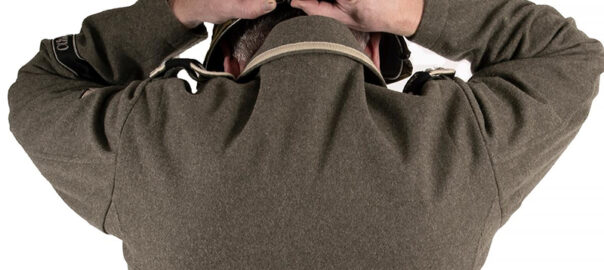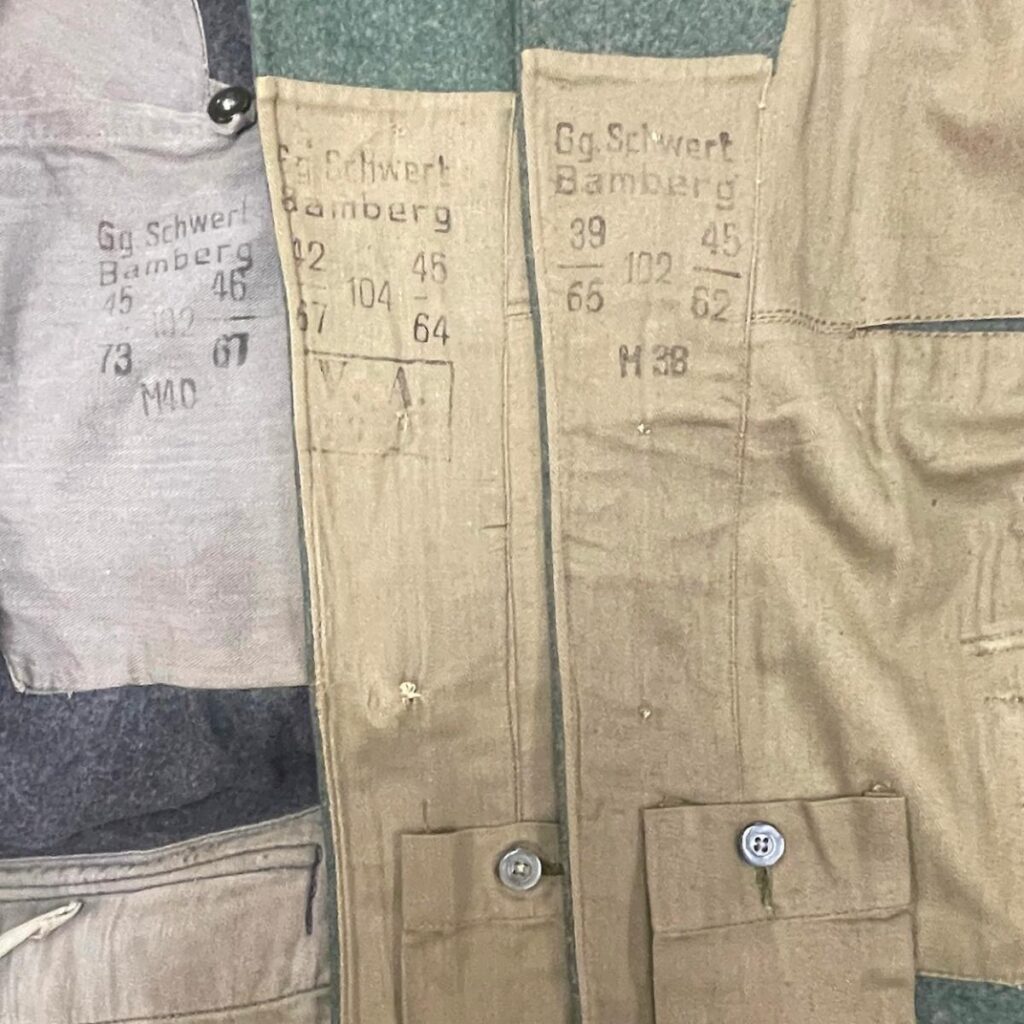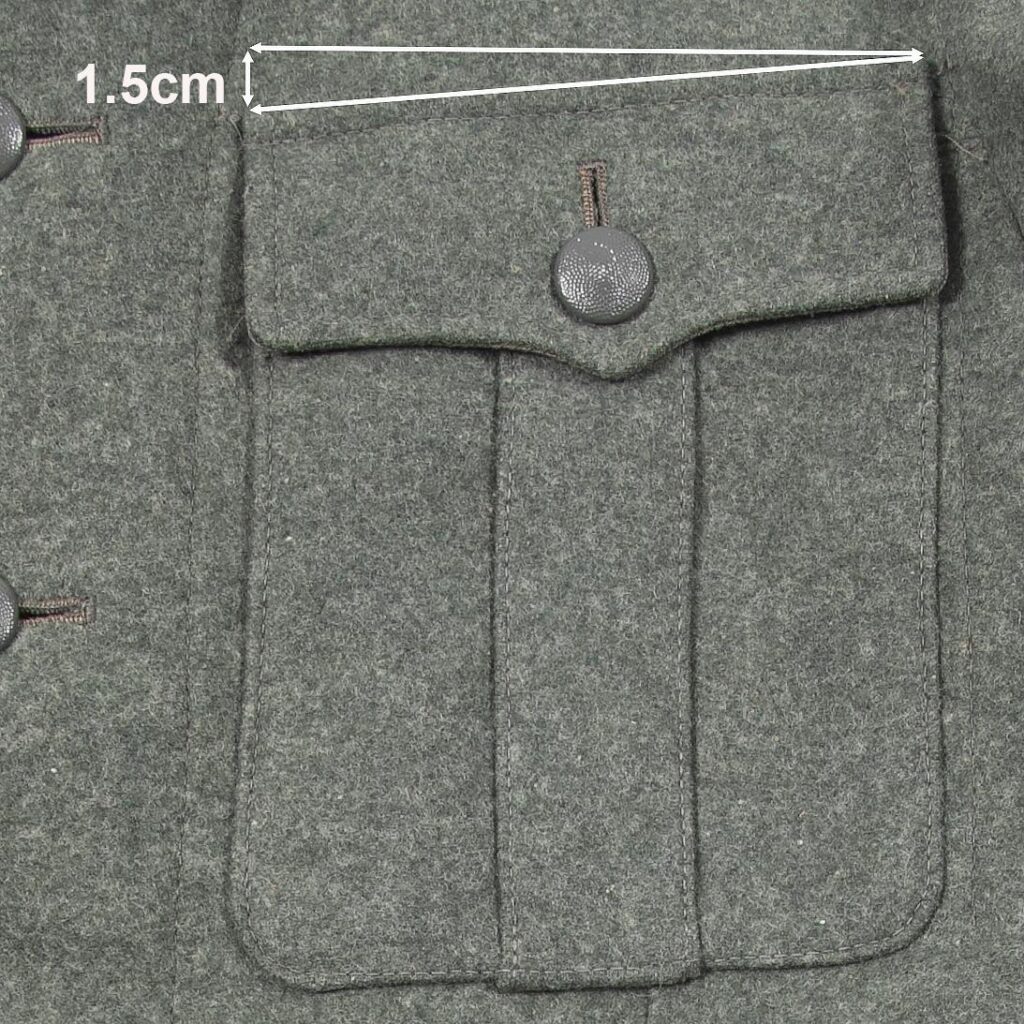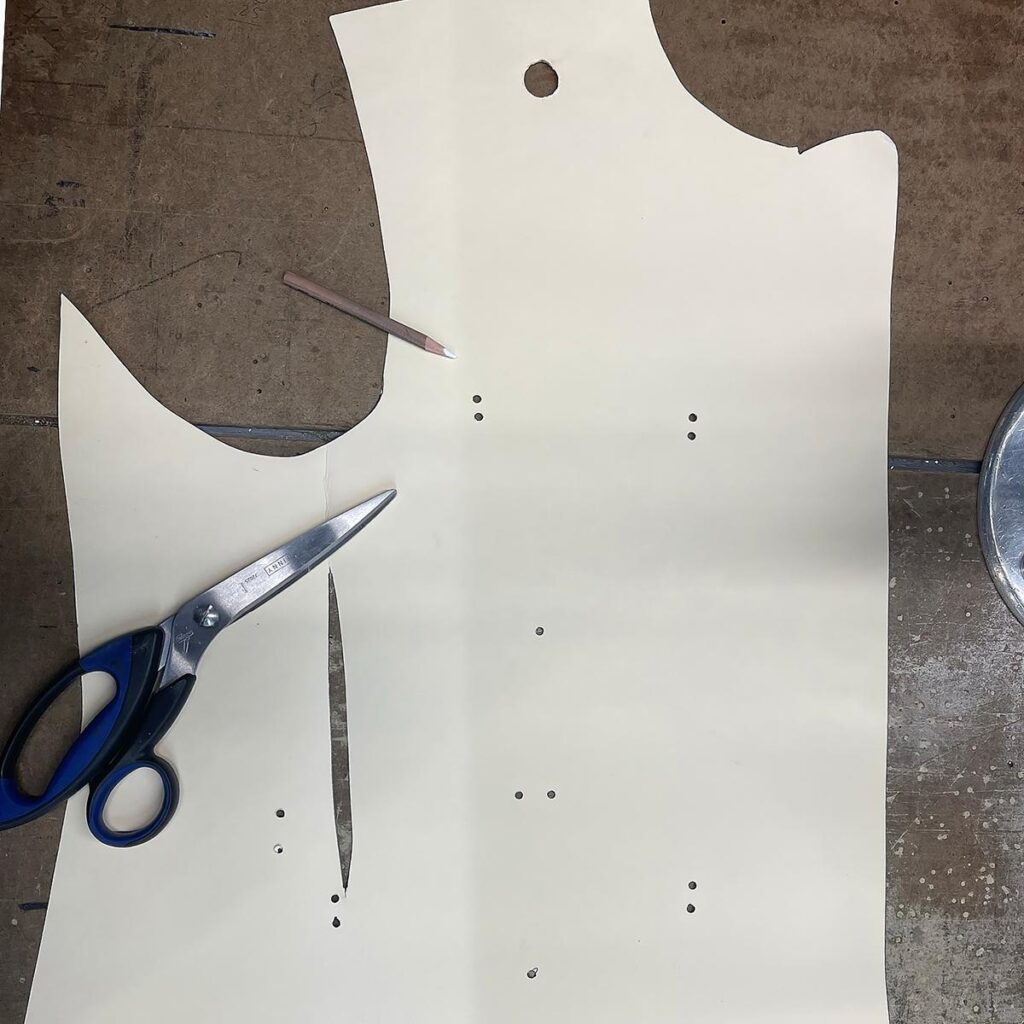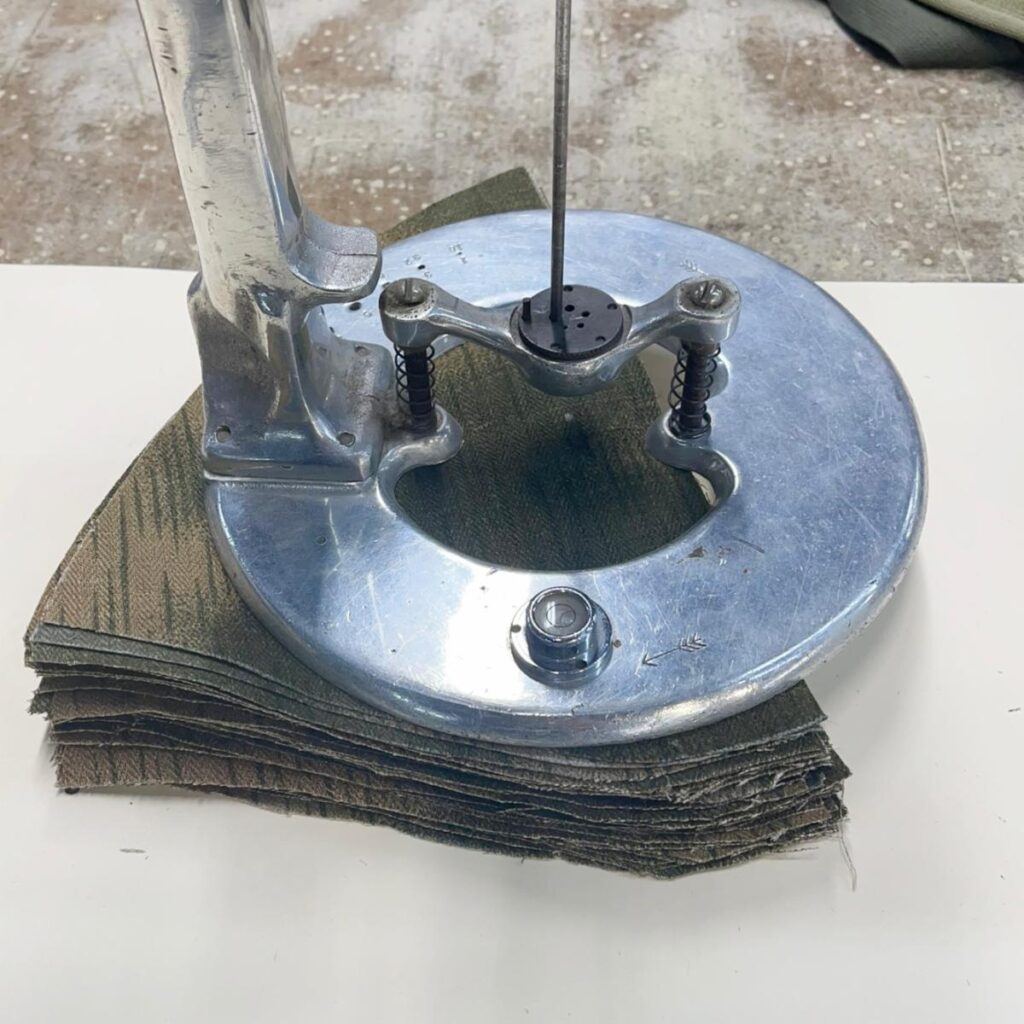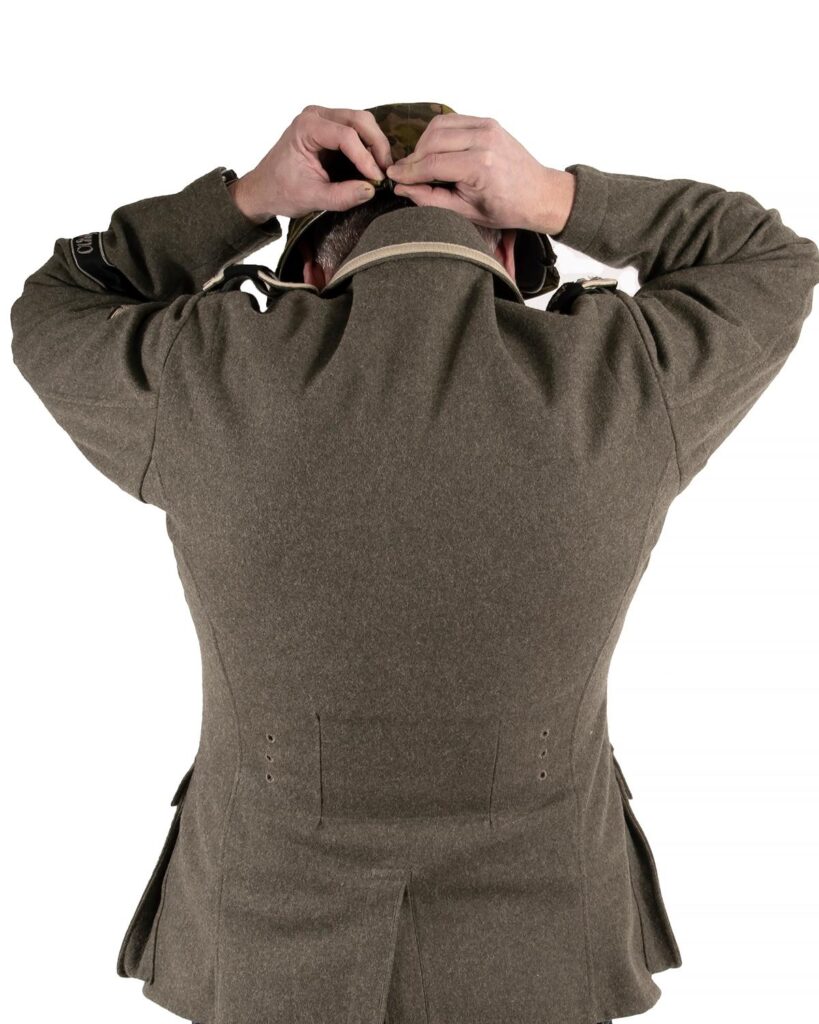
The skirt on a properly patterned Feldbluse does not fly up when one raises their arm(s) to aim, salute, climb or fasten the rear clip on their helmet cover. (Texled tunic shown.)
What are “Suitcoat Shoulders”?
This is the name given some years ago to the tendency for the skirts of many reproduction Feldblusen to ride up, sometimes almost to one’s chest, when the wearer raises their arms. Originals do not do this – they were designed as a field/ combat uniform, and they allow a full range of motion.
The name “suitcoat” came about due to the apparent cause of this- many reproductions, both old and new, at all ends of the price spectrum, appear to have based their patterns on a generic suitcoat design, not a WWII tunic.
But, but, but…they say they used an original! Maybe for some of the pattern yes. However, if the uniform behaves like Marylin Monroe’s dress on a subway grate when one tries to reach upward, the maker either started with a suit pattern or simply didn’t design it properly. The problem lies in the shape and cut of the armhole, sleeve, and shoulder area. It need not be off by more than an inch or two to cause a train wreck.
Here’s a decent article that explains it in some detail.
Other random facts
Some manufacturers…
To date, I have found at least one manufacturer that made uniforms for the Luftwaffe, Waffen-SS, and Heer. G.g. Schwert in Bamberg. (They also made Panzer tunics.)
Note that this is the only legitimate VA contract M36 I have ever found.
Georg Possner also made Heer and SS Feldblusen.
Are chest pockets supposed to be angled like Jungle Fatigues?
Yes, just not as dramatically. The specification is a tilt of 1.5cm from one side to the other.
On some tunics, particularly late War examples such as Erbsentarn, it can get tough to even discern this as things were getting sloppy, but they are always slightly rhomboidal in shape.
Why? It’s a tailoring trick. When worn, the curve of one’s chest makes them appear level. If the pockets were rectangular, it will appear that they angle upward toward the center.
The pockets are too short/ long/wide!
The chest pockets are supposed to grade with the size of the tunic. Wartime tailoring guides specify which width corresponds to each chest size and which height for each body length. Measuring original uniforms proves this was one the few specifications to have been routinely ignored. It’s possible to measure 5 different original tunics of the identical size and find 5 different size chest pockets between them.
Heer tunics tend to use the smaller sizes of pockets no matter how large the uniform, while those made by the Waffen-SS (as opposed to those assembled for them by “civilian contractors”) tend to use the largest pockets no matter how small the tunic.
Hip pockets were specified to be one size. However, originals vary in height, width, and taper about 10%…which is also the approximate deviation I’ve found on US WWII uniforms. Must be a conspiracy amongst the worldwide garment cabal.
How does one know where to put the pockets?
Chalk marks or drill holes. The paper patterns have pre-punched holes (above) for the corners of the pocket flaps and pockets, as well as the start and end points of each dart. This can be laid over the cut panel and a chalk pencil used to mark them.
A drill?
Yes. Fabric drills have a hollow needle and are used when one has cut stacks of fabric, thus multiple garments (up to 50 is manageable) and this is far more efficient than chalk marking every single piece. The holes are small and are covered up by the pockets or rolled closed in the darts.

